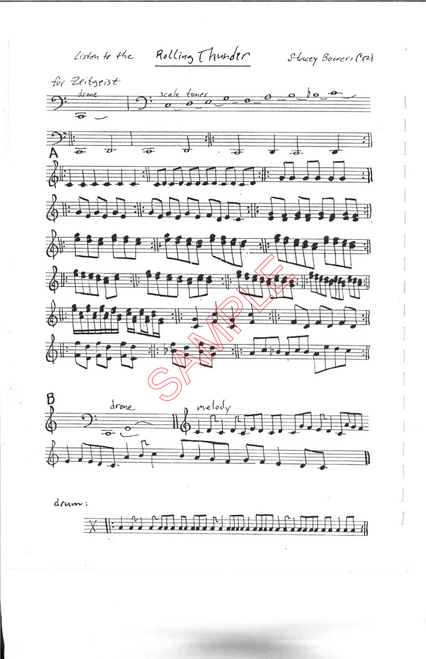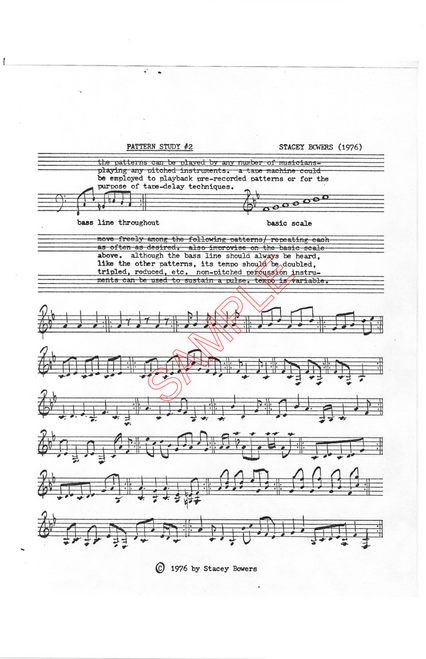Includes score.
This piece was commissioned and recorded in 1982 by Zeitgeist, the new music collective based in St. Paul, Minnesota. The main melodic them is from The Bells by William Byrd. The theme is used as a basis for small repeating patterns, additive melodic repetition and improvisation on a basic scale, all over a drone foundation. The work begs for order, time and patience from both performer and listener.
Print size: 11 x 14"
Additional scores available here for 5.00 each.
Review from Percussive Arts Society:
Listen to the Rolling Thunder
Stacey Bowers
This offering from Stacy Bowers is based on the harpsichord work “The Bells” by William Byrd. The instrumentation is open-ended, allowing for any number of keyboard percussionists. It is comprised of four sections: an introduction and sections A through C.
The introduction starts with the ensemble droning on the pitch C. A number of pitches are presented for improvisational material before a short, repetitive melodic pattern is established. The A section includes 19 one-measure phrases. The performance notes state that the performers should move through the patterns “roughly together.” The performers are instructed to “segue to repeated C’s” before transitioning to the next section. The B section features a 35-note melody, which is to be constructed one note at a time by playing note one, then notes one and two, then notes one, two, and three, continuing until the entire melody is established. The ensemble then improvises on the melody, becoming softer and sparser, resulting in a drone-style effect. The C section is similar to the A section; however, the melodies have more of a 9/8 feel. It finally ends with tremolos on C and G.
Every performance of this piece will sound different. The improvisational aspect along with the indeterminate number of instrumentalists make this piece very unique.—Jeff W. Johnson, 2020
Demo:







